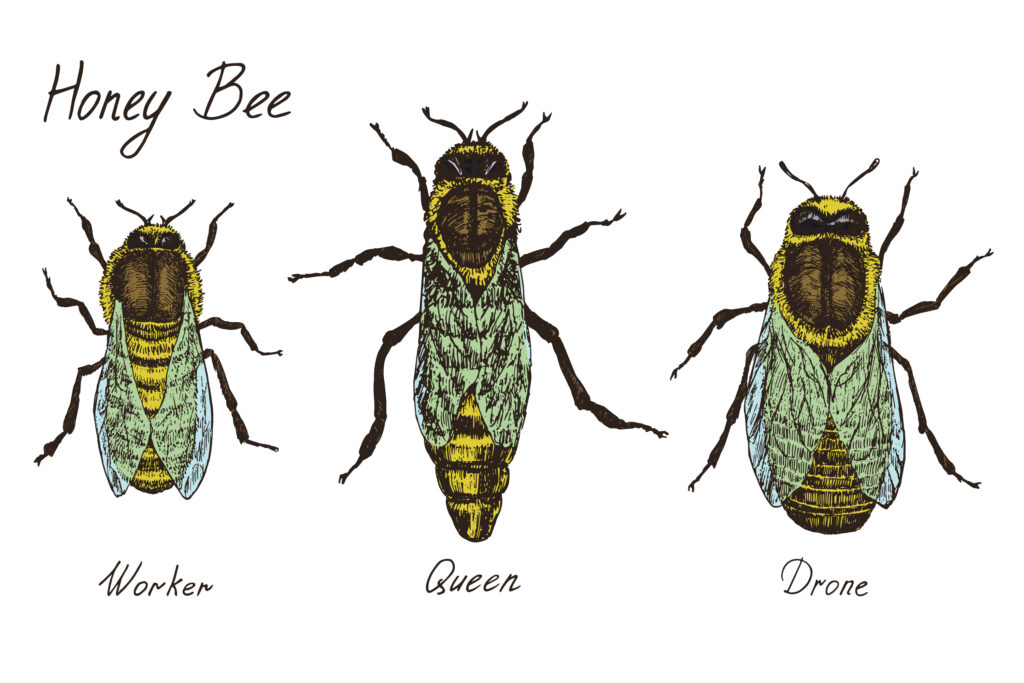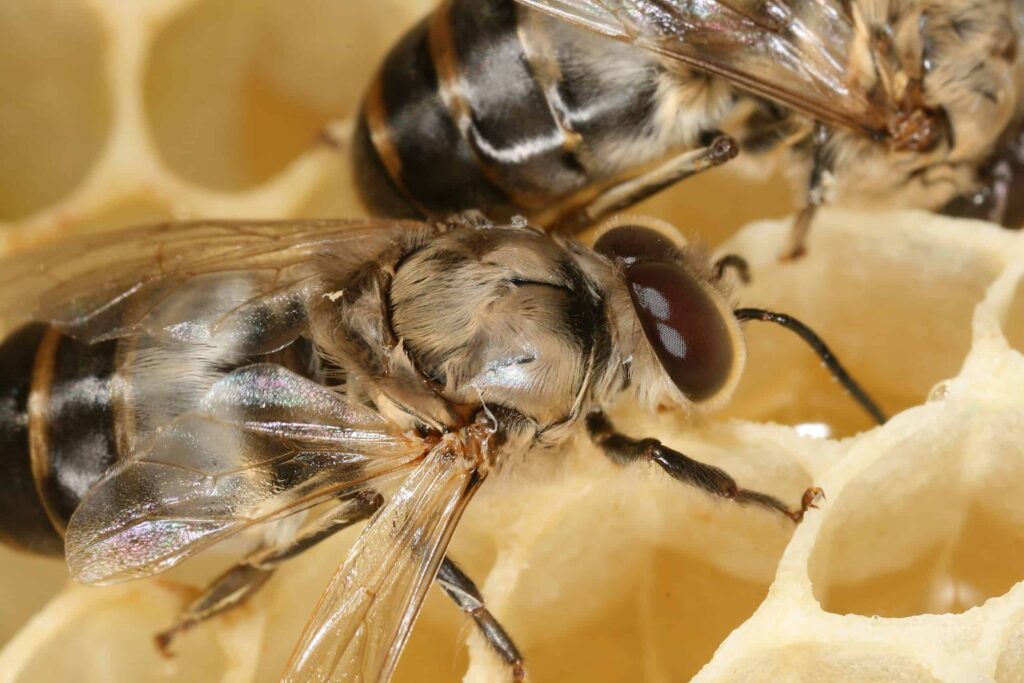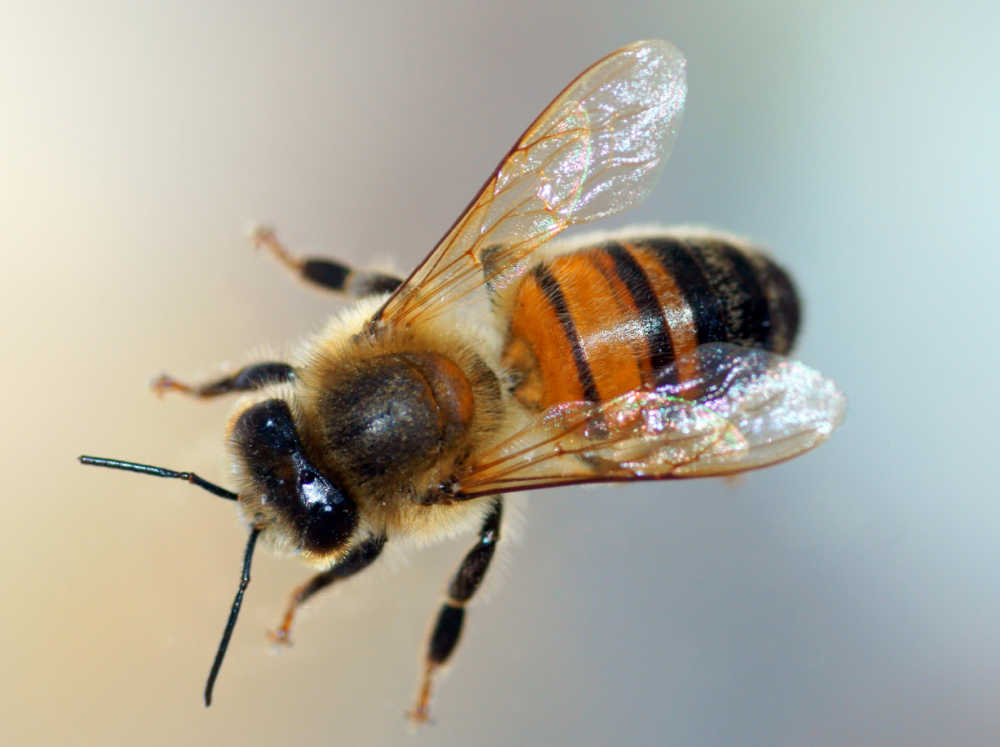
Imagine a bustling beehive filled with industrious worker bees buzzing from flower to flower, collecting nectar and pollinating the environment. But amidst this hardworking community, there is a unique bee that stands out – the drone bee. With its distinct appearance and peculiar behavior, you might be wondering what exactly is the role of the drone bee in this magnificent ecosystem. Well, sit tight because we’re about to unveil the fascinating world of the drone bee and its vital contribution to the hive.

Definition of a Drone Bee
A drone bee is a male bee that belongs to the Apidae family. Unlike the female worker bees, drones do not possess a stinger, and they cannot gather pollen or nectar for the hive. Their main purpose is breeding and mating with a queen bee. Drones are larger than worker bees, measuring approximately 15-17 mm in length. They have large eyes that meet at the top of their heads, allowing them to see a wide range of their surroundings. Drones also have stout bodies, which enable them to fly at high speeds.
Physical Characteristics
The physical characteristics of drone bees distinguish them from other members of the hive. As mentioned earlier, drones are larger in size compared to worker bees. They have robust bodies with larger eyes, which give them a distinct appearance. Their eyes are particularly important as drones rely on their vision to locate virgin queens during the mating process. Additionally, the body of the drone bee is stockier and more muscular than that of the female worker bees, emphasizing their role in reproductive functions.
Lifecycle
The lifecycle of a drone bee is closely tied to the needs of the colony. Drones are produced during periods of high nectar flow and a favorable environment for breeding. They emerge from their cells about 24 days after the queen lays the eggs. During their early days, the young drones are fed by worker bees with a special secretion known as “royal jelly.” As they grow older, they start feeding on a mixture of pollen and nectar. Their breeding purpose becomes more prominent as they reach maturity. However, once the breeding season ends, drones are expelled from the hive by the worker bees as they consume valuable resources without making any meaningful contribution to the colony.
Reproductive Purpose
The primary reproductive purpose of a drone bee is to mate with a queen bee. Mating behavior and anatomy play crucial roles in achieving this reproductive goal.
Mating Behavior and Anatomy
When it’s time for the mating flight, the queen bee flies to a “drone congregation area” where drones from different hives gather. The drones engage in a specific mating behavior called the “mating ball.” Multiple drones chase and pursue the queen until one of them successfully mates with her. During mating, the drone transfers his genetic material to the queen in the form of “spermatophores.” Once the mating process is complete, the drone loses its genitalia and ultimately dies.

Population Control and Genetic Diversity
Drone bees play a vital role in maintaining the population control and genetic diversity of a bee colony. They contribute to these aspects in the following ways:
Maintaining a Balanced Bee Colony
The presence of a limited number of drones in a hive ensures that resources are not wasted on unnecessary individuals. The drone bees are only produced during a period when the environment is conducive to reproduction, ensuring a balanced population of bees within the colony.
Preventing Inbreeding
The mating behavior of the drone bee has a genetic significance as well. As the queen mates with drones from different colonies, it helps promote genetic diversity and prevents inbreeding. This genetic variation is essential for the overall health and resilience of the bee population.
Drone Bee vs. Worker Bee
While both drone bees and worker bees are essential to the functioning of a beehive, there are distinct differences between these two types.
Responsibilities and Tasks
Worker bees are responsible for various tasks within the hive, including foraging for food, nursing the brood, and building and maintaining the hive. They perform crucial roles such as cleaning, feeding the larvae, and producing wax for the hive’s structure. Drones, on the other hand, do not participate in these tasks. Their primary responsibility is to mate with the queen bee.
Physical Differences
Drone bees differ from worker bees not only in their responsibilities but also in their physical characteristics. As mentioned earlier, drones are larger and more robust than worker bees. Additionally, drones have larger eyes, which aid in their ability to locate potential mating partners during the mating flight. Worker bees, on the contrary, have smaller eyes that are necessary for their specific roles within the hive.

Role in Honey Production
While drone bees might not actively participate in honey production like their worker bee counterparts, they still contribute to this process indirectly.
Collecting Nectar
Drones do not gather nectar like worker bees do. However, when a drone accompanies a worker bee on its foraging trip, it can benefit from the nectar collected. This allows drones to sustain themselves nutritionally, even though their main purpose is reproduction rather than honey production.
Assisting in the Creation of New Colonies
The role of drones in the creation of new colonies is crucial. When a swarm leaves its original hive in search of a new nesting site, virgin queens and drones are among the individuals that leave. Drones are an essential part of this process as they contribute their genetic material to new colonies, ensuring genetic diversity and the continuity of bee populations.
Drone Congregation Areas
Drone congregation areas are specific locations where drones from various colonies gather for the purpose of mating.
Selection and Location
Drone congregation areas are not randomly chosen; they are carefully selected by the bees. These areas often have specific features that attract drones, such as open spaces and significant landmarks. These locations are typically situated at higher altitudes, which makes them more visible and accessible to drones flying from their own hives.
Importance for Reproduction
The congregation of drones in specific areas is critical for the reproductive success of honeybees. It ensures that drones have the opportunity to mate with virgin queens from different hives, leading to the genetic diversity necessary for the long-term survival of the bee population.

Limited Lifespan and Seasonal Activity
Drone bees have a relatively short lifespan compared to worker bees and queens. Their activity is also dependent on the seasons.
Short Lifespan and Role During Summer
The average lifespan of a drone bee is only 40 to 50 days. Drones are most active during the summer months when reproductive activities are at their peak. They play their role in mating with virgin queens during this time, but once the mating season ends, they are quickly expelled from the hive.
Hibernation During Winter
During the winter months, when resources are scarce and the hive’s focus shifts to survival, drone bees are not needed. They are expelled from the hive, and any remaining drones outside the hive’s protection are unlikely to survive the harsh conditions. This expulsion helps conserve the hive’s limited resources and ensures that the strongest and most essential members, such as the queen and worker bees, survive until spring.
Threats and Dangers
Drone bees face several threats and dangers in their natural environment, both from predators and human interference.
Predators and Defense Mechanisms
Predators such as birds, dragonflies, and other insects pose a threat to drone bees. Without a stinger for defense, drones rely on their agility and speed to escape from these predators. They also benefit from their large eyes, which allow them to detect potential threats early and take evasive action.
Human Interference
Human activities, particularly the widespread use of pesticides, pose a significant danger to drone bees. Pesticides can be toxic to all bees, including drones, and can have devastating effects on their populations. Additionally, habitat destruction and loss of foraging resources also negatively impact the overall survival of drone bees.

Implications for Beekeeping
Understanding the role of drone bees in a beehive has important implications for beekeeping practices.
Role in Queen Bee Mating
Beekeepers need to be aware of the role drones play in queen bee mating. Maintaining a healthy population of drones is crucial to ensure successful breeding and genetic diversity within the hive. Beekeepers may attempt to promote the production of drones by creating favorable conditions, such as providing additional drone comb or encouraging the colony to produce more drones during the peak breeding season.
Management Considerations
Beekeepers must also manage drone populations effectively. Since drones consume resources without contributing to honey production or other essential hive tasks, maintaining a balanced ratio of drones to worker bees is essential. Timely removal of excess drones can prevent the strain on the hive’s resources and ensure the focus remains on the overall health and productivity of the colony.
The Future of Drone Bees
The future of drone bees may be influenced by technological advancements and their potential impact on agriculture.
Technological Advancements
Advancements in technology, such as the use of drones (unmanned aerial vehicles), have the potential to revolutionize agriculture, including pollination services. While these drones are not biological drone bees, they can assist in the pollination process by imitating the natural behaviors of drones. With the development of sophisticated algorithms and mapping systems, these drones have the capability to perform pollination in orchards and fields efficiently.
Potential Impact on Agriculture
The decline in bee populations, including drone bees, has raised concerns about their impact on agriculture. As pollinators, bees, including drones, play a critical role in crop production. If drone populations continue to decline, it could have significant consequences for the agricultural industry and food security. Understanding the importance of drone bees and taking measures to protect and promote their populations is crucial for the sustainability of agriculture.
In conclusion, the drone bee’s role within the colony is primarily focused on reproduction and mating with the queen. While they may not actively participate in tasks such as honey production or hive maintenance, drone bees contribute to the overall genetic diversity and population control of bee colonies. Their limited lifespan, specific mating behaviors, and potential threats highlight the importance of understanding and protecting drone bee populations. Beekeepers play an essential role in managing and supporting drone bees within their hives to maintain the health and productivity of their colonies. Looking ahead, technological advancements and the potential impact of drones in agriculture may offer new possibilities for the future of drone bees and their role in sustaining our ecosystem.